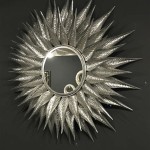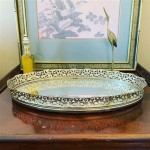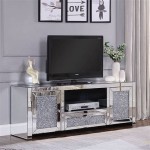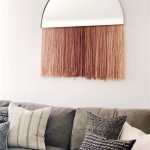How To Screen Mirror Your Phone to Your TV Without Wi-Fi
Screen mirroring, the ability to duplicate a mobile device's display on a larger screen like a television, offers significant advantages for presentations, entertainment, and gaming. While Wi-Fi is a common method for achieving this, several alternative methods exist that bypass the need for a wireless network. These methods are particularly useful in situations where Wi-Fi isn't available or stable.
One prominent method for screen mirroring without Wi-Fi utilizes wired connections. Several options exist within this category. Using a USB cable is a straightforward approach. Many modern smartphones and televisions support connections via USB, allowing for direct display mirroring. This method often requires specific adapters depending on the device's ports (e.g., USB-C to HDMI). The connection establishes a digital pathway directly between the phone and the television, offering a stable and generally lag-free experience. Consult the user manuals of both the phone and television to verify compatibility and required adapters.
Another wired option involves utilizing Mobile High-Definition Link (MHL) technology. MHL cables connect a phone's micro USB port to the television's HDMI port. This establishes a direct connection for audio and video transmission. MHL supports high-definition video and audio, delivering a high-quality viewing experience. However, not all devices support MHL, so verifying compatibility beforehand is crucial. Additionally, some devices may require a specific MHL adapter for functionality.
Similar to MHL, SlimPort is another wired alternative. SlimPort adapters connect to a device's micro USB port and offer various output options, including HDMI, VGA, and DVI. This versatility makes SlimPort adaptable to a wider range of displays and projectors. Like MHL, SlimPort supports high-definition video and audio. Checking device compatibility is essential, as SlimPort support is not universal.
Moving away from wired solutions, several wireless options exist for screen mirroring without Wi-Fi. Miracast is a popular wireless standard that enables direct device-to-device connections for screen mirroring. Many newer smart TVs and streaming devices have built-in Miracast support. For devices without native Miracast support, wireless display adapters can be plugged into the television's HDMI port. Miracast creates a direct wireless connection between the phone and the display, eliminating the need for a Wi-Fi network. This method requires compatibility between both devices and may require enabling specific settings on the phone and the display.
DLNA, or Digital Living Network Alliance, offers another wireless alternative. While often associated with streaming media, DLNA can also facilitate screen mirroring in certain scenarios. DLNA-compatible devices, including some smart TVs and media players, can display content streamed from a phone. However, DLNA does not typically mirror the entire phone screen but rather specific media files or apps that support DLNA streaming. The phone and the receiving DLNA device must be on the same local network, though this network does not need to be a traditional Wi-Fi network. A wired Ethernet connection can suffice.
Chromecast devices, while often associated with Wi-Fi usage, can also be utilized for screen mirroring without a wireless network in specific configurations. Using a travel router, one can create a local Wi-Fi network independent of an internet connection. The phone and Chromecast can then connect to this local network, enabling screen mirroring. This method requires a travel router capable of creating a Wi-Fi hotspot.
When opting for wired connections, ensure the cable and adapters are compatible with the specific ports on both the phone and the television. For wireless solutions, verifying compatibility and enabling the necessary settings on both devices is crucial for successful screen mirroring.
Factors affecting performance, regardless of the chosen method, can include the phone's processing power, the television's display resolution, and potential interference from other electronic devices. Troubleshooting steps for common issues, such as a lack of display or audio synchronization problems, typically involve checking cable connections, verifying device compatibility, and restarting devices. Consulting the user manuals of both the phone and television often provides specific troubleshooting guidance.
Selecting the most suitable screen mirroring method without Wi-Fi depends on the available equipment, desired functionality, and the specific requirements of the situation. Wired solutions generally offer better stability and lower latency, while wireless methods provide more flexibility in terms of device placement. Considering these factors will aid in choosing the optimal method for a seamless and effective screen mirroring experience.

How To Mirror Phone Screen Without Wifi 4 Simplest Way Help

2024 Tutorial How To Mirror Phone Tv Without Wi Fi

How To Mirror Phone Screen Without Wifi 4 Simplest Way Help

How To Screen Mirroring Any Android Phone Tv Without Wifi

How To Screen Mirroring Any Android Phone Tv Without Internet Wifi In Hindi

Simple Ways To Mirror Iphone Tv Without Wifi 6 Steps

How To Connect Phone Tv Wirelessly With Usb Without Wifi And More 91mobiles Com

How To Mirror Iphone Tv Without Wi Fi

How To Mirror Phone Tv Without Wifi 7 Easy Methods Gawvi

How To Screen Mirror Without Wifi 2024 Updated








